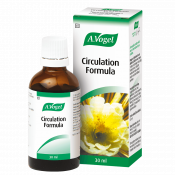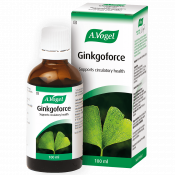Raynaud’s disease (also called Raynaud’s Phenomenon or Syndrome) and pronounced ‘raynose’ is an abnormal sensitivity to cold or stress that predominantly affects the blood supply in the fingers and toes with an unknown cause. Common symptoms are tingling and numbness in the fingers and or toes, as well as colour changes where the fingers or toes turn an alarming white (or even blue), and then red and a bit painful once the hands and feet warm back up again.
It’s caused when the tiny blood vessels that feed your fingers and toes narrow quickly and go into spasm in response to temperature changes, restricting the flow of blood to these areas.
Raynaud’s affects as many as 1 in 10 people and more women than men appear to get it. There’s no cure, but it can be managed, often through some lifestyle changes and being careful.
There are two kinds of Raynaud’s – primary and secondary. Most people suffer from the primary kind, although the cause is not fully understood. Secondary Raynaud’s develops due to an underlying condition like lupus or scleraderma and this can be a little more challenging to manage and a doctor or healthcare professional’s help is required.
Symptoms of Raynaud’s include:
- Sensitivity to cold. Interestingly, emotional stress can also cause your body to react as if it were reacting to cold.
- Rapid colour changes in fingers, toes, sometimes even the ears, lips and nose. These areas turn white due to the lack of blood flow. If you notice blueness, that's because the blood that's left in the tissue loses its oxygen. • Numbness, pain and coldness. The numbness feels the same as your arm or leg do when they 'fall asleep' if you've been sitting or lying a certain way for too long.
- Tingling, 'pins and needles', throbbing and heat when the hands or feet start to warm up and the little blood vessels come out of spasm and oxygenated blood rushes back into the area.
Winter months are more challenging
Obviously the winter months are more challenging but some simple preparation and awareness can help you to reduce your risk of attacks:
- Stay warm and avoid exposure to cold as much as possible.
- Keep your hands warm and don't expose them to extreme shifts in temperatures such washing them under an outside cold tap in winter or putting them in your swimming pool water. If you have no option because someone has to empty the pool weir, quickly dry them and put them under warm (not hot) water immediately.
- Dress or pack for cold weather. Yes, it might be a lovely warm sunny afternoon but as soon as the sun drops, the air gets nippy fast. Even if no one's put on a jacket yet, for you that drop in air temperature can trigger a Raynaud's attack. So make sure you have gloves, a scarf, warm socks and even a hat handy. Body warmer jackets are also helpful because by keeping your core warm, your body's less likely to over-react to a cool breeze.
- Stay dry or dry off immediately after exercise. In winter, especially if we're exercising outdoors we often start with layers of warmer clothes leading us to start sweating after a while. And that sweat is a potential problem, especially in the minutes after you're done. Sweat cooling on your skin can kick off an episode of Raynaud's. Choose fabrics that wick sweat away from the skin while you train and use a towel to dry off properly, including before you leave the gym and walk out into cooler air.
- But do stay active and keep exercising during winter! Exercise is very beneficial for your circulation.
- Let your shower reach the right temperature (or run your bath) before undressing in a slightly chilly bathroom during winter. Getting out of warm clothes and then standing around in a towel getting the water temperatures just right can have your fingers or toes going white and numb in no time.
- Avoid stress. Emotional stress and anxiety are known to exacerbate Raynaud's, sometimes triggering episodes without any changes in temperature. But in winter you have cold weather and stress to contend with, so try change the one factor you can and work to lower your stress levels.
- Limit your intake of caffeine and alcohol.
- Stop smoking. It makes Raynaud's worse because it narrows your blood vessels.
Is there anything take to treat Raynaud’s?
Before we answer that, it’s important to mention that if you have Raynaud’s-like symptoms, always get it checked by your doctor because it may be secondary to another condition which needs treating as well.
However, if you have primary Raynaud’s (Raynaud’s disease without a known cause) we’re so glad you asked, because yes, there is.
For people with primary Raynaud’s, an extremely helpful and popular product is A.Vogel’s Circulation Formula. This homeopathic product is the go-to remedy for many Raynaud’s sufferers because the ingredients not only support the blood circulatory system with daily use but it’s also a very fast-acting treatment to stop a Raynaud’s episode in its tracks.
Many people ensure they always have a bottle close at hand in winter - at home, in their handbag and in their car – so should they suddenly feel the tell-tale numbness and tingling starting, they can quickly take 10 drops on their tongue to help stop the blood vessel spasm. If necessary, another dose can be taken a few minutes later.
Why Circulation Formula is so effective is because it contains a comprehensive list of ingredients that help counteract blood circulation problems, prevent or relieve spasms of blood vessel walls and increase the peripheral circulation (blood flow to the arms, hands, legs and feet).
Apart from its acute (in the moment of a Raynaud’s episode) treatment benefit, A.Vogel Circulation Formula can also be used long term, 10 drops taken 2 or 3 times a day, to support circulatory health and help to reduce the frequency of attacks.

